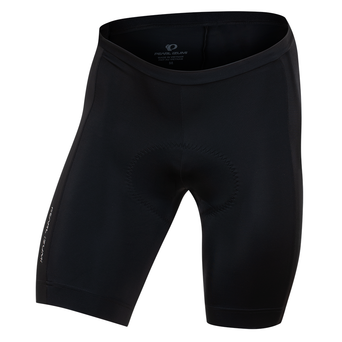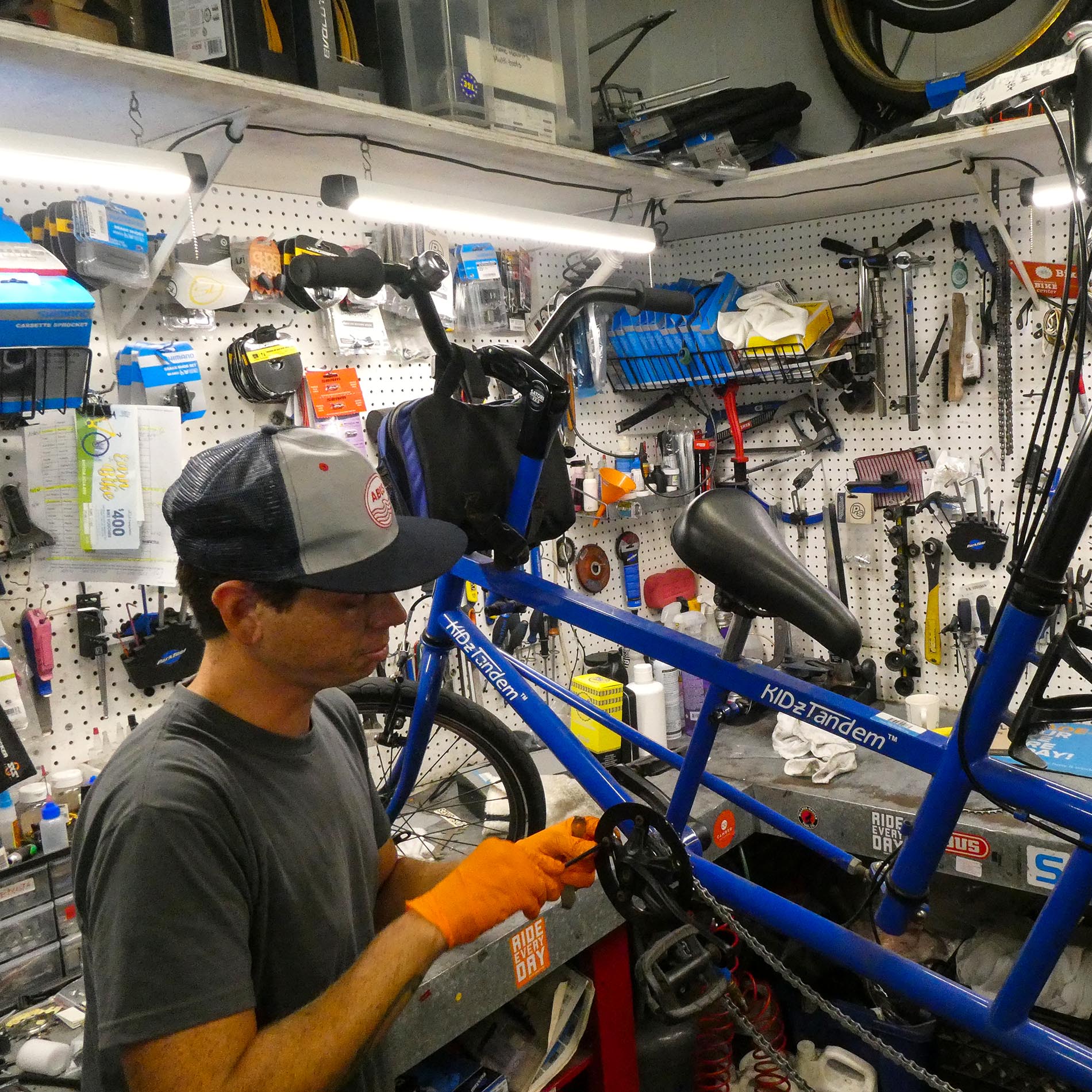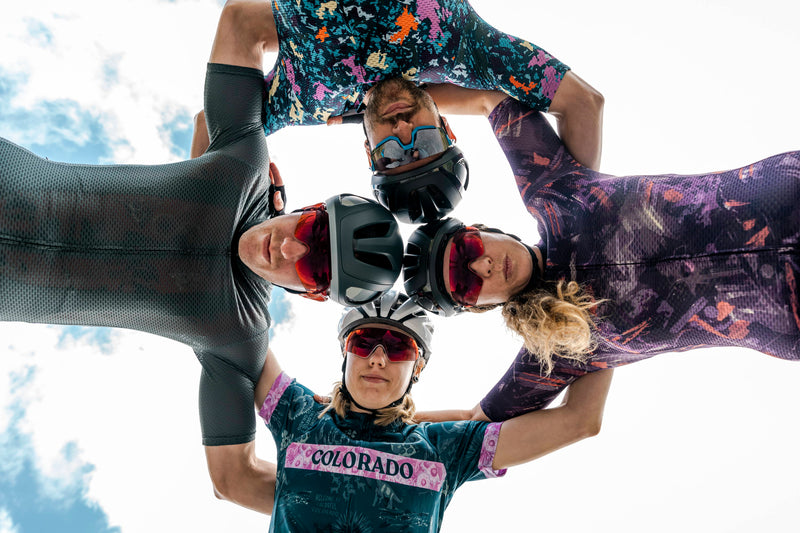It was 11 years ago that Brandon Scales fully made the commitment.
The Southern California resident handed his car keys to his sister, wrangled a well-worn road bike from a neighbor, and officially gave up driving to work.
“I had a car and bunch of street sweeper tickets because I wasn’t using it anyway,” Scales said.
When Scales started bike commuting full time, he was riding 4 miles each way to and from the office. Now, he commutes 48 miles each day.
Not only has he not looked back, but he has since dedicated his career to helping others make the same shift.
Three months ago, Scales, a PEARL iZUMi Crew member, started a new job with The Bike Center — a subcontractor with Los Angeles Metro. The objective: to support and build commuter cycling in a county with nearly 8 million registered automobiles.
“It’s the anti-bike shop,” said Scales — who doesn’t have an official job title — of The Bike Center’s three-location commuter support network. “We have no intention to sell anything. You can come in as a commuter, whether it’s your first day or 11th year, and I am only here to help you. I turn wrenches, teach classes, but the biggest thing that we do is make safe spaces for commuters.”



The Bike Center locations include 24-hour bike garages, showers, lockers, work stands, and on-site mechanic services. For a $15 monthly membership, commuters have access to it all via key cards.
“It’s all the amenities you would get with a gym, without the gym. On the service side of it, we’re a licensed dealer for parts companies. But really what we’re there for is to keep bikes working so people can keep riding,” said Scales, who noted that the charges for most repairs merely covers parts costs. “(Commuters will) give me their bike in the morning and say, ‘I need new brake pads,’ and the brake pads are on there and ready for them when they get off work, so they can ride home. It’s a truck stop for bike commuters.”
So far, there is a downtown L.A. location, one metro line site in Culver City, and the hub just off the coastal Marvin Braude Bike Trail — known as The Strand — in Santa Monica. But Scales said there is a deal in place with L.A. Metro to build similar spaces in the area going forward. Whether it’s retrofitting spaces into existing parking structures or constructing purpose-built facilities wherever new rail line buildings go in, the network is set to take off.
So is ridership.
“After three months, I’m converting a dozen people a week,” said Scales, who uses the time he spends on his bike to and from work as a form of daily meditation. “These are people who have thought about it, but didn’t know where to begin.”
Scales and company are striving to bridge that gap with a commuter pilot program that sets up aspiring bike commuters with a bicycle, mirrors, lights, and helmet.
“I loan it to you for two weeks for free,” Scales said. “After that, I’ll sell you the kit or build you whatever kit you want.”
The next step, Scales said, is instilling confidence in cyclists who may be literally merging into traffic for the first time.
“I would say that riding in traffic is the biggest hurdle that people have to overcome,” Scales said. “I’ll be the first to admit that, out here, it’s totally fucking terrifying.”




Kyle Wagenschutz, Director of Local Innovation at PeopleForBikes, said safety concerns remain the primary deterrent to bike commuting, and cycling in general.
“The number one reason more people don’t ride bikes is that they don’t feel safe on the streets,” Wagenschutz said. “Only a small percentage of riders feel comfortable mixing it up with car and truck traffic.”
Bike routes that improve both safety and navigation are the key to expanding rider confidence and participation, Wagenschutz said.
“For decades, U.S. traffic engineers assumed that people on bikes could almost al-ways share the road with cars. But a shoulder — even a striped bike lane — on a street with fast traffic isn’t an appealing place to ride for most people,” said Wagenschutz, who noted that people ride more when they can access networks that get them comfortably where they want to go.
“The street network allows drivers to travel anywhere in the community without needing to think much about wayfinding. Complete bike networks offer the same flexibility to people who bike.”
In L.A., Scales leads guided rides along popular commuter routes to show people the safest way to get to and from work, or just across town. When pedaling the streets is necessary, he emphasizes assertive riding.
“It’s all about building confidence and learning how to behave on the road,” Scales said. “Act like a car. You’re on the street. Take the slow lane. Use lights, use turn signals.”
Scales would love to see U.S. metro areas trend toward a European slant on bike commuting.
“Copenhagen has mega-garages that house thousands of bikes. (The Biker Center) can house about 100 bikes at any given time, but we’ve never been full,” Scales said. “We’re just a drop in the bucket. But we’re the only drop going into that bucket right now. Most people have never seen or heard of anything like this. But that’s the United States.”
Scales sometimes has to remind European tourists of where they’re riding.
“There’s definitely a group of people (in the U.S.) who realize, (cars are) not the only answer,” Scales said. “But we also get tourists, who may come in and say, ‘I want to ride, I’m from Holland.’ But I have to tell them, ‘Yeah, but that guy behind the wheel is definitely not from Holland.’”
He hopes the time comes when he doesn’t have to issue such warnings.
“A cultural and perspective shift is what we’re going after,” Scales said. “In the next 10 years, my goal is equality. I just want everybody to know that this — the roads — is a public space. It’s not just for drivers. That’s just one method. I’m hoping just to have drivers give everyone else some sort of respect.”







